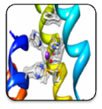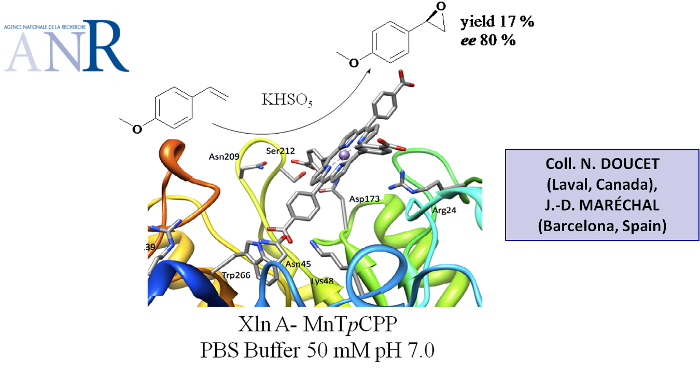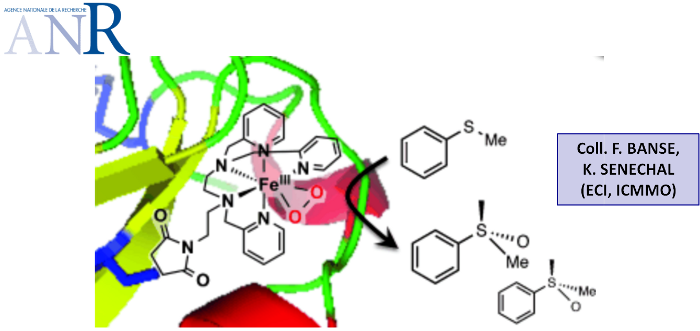
2.1. Métalloenzymes artificielles pour la catalyse d'oxydations énantiosélectives (xylanases, α-Rep, β-lactoglobuline)

Artificial metalloenzymes, obtained by non-covalent insertion of Mn(III)-meso-tetrakis(para-carboxyphenyl)porphyrin, Mn(TpCPP), into xylanase 10A from Streptomyces lividans as a host protein were found to be able to catalyse the oxidation of para-methoxystyrene by KHSO5 with a 16% yield and the best enantioselectivity (80% in favour of the R isomer) ever reported for an artificial metalloenzyme.
ChemBioChem (2012) 13, 240-251. Chem. Commun. (2015) 51, 2476-2494

An artificial metalloenzyme has been prepared by covalent grafting of a non-heme Fe(II) complex into bovine β-lactoglobulin. This biohybrid catalyst activates H2O2 to oxidize thioanisole into phenylmethylsulfoxide as the sole product with an enantiomeric excess of up to 20 %. A high-spin (S = 5/2) Fe(II) m(η2-O2) intermediate was identified as the active species in the catalytic sulfoxidation of the substrate.
Chem. Eur. J. (2015) 21, 12188-12193

